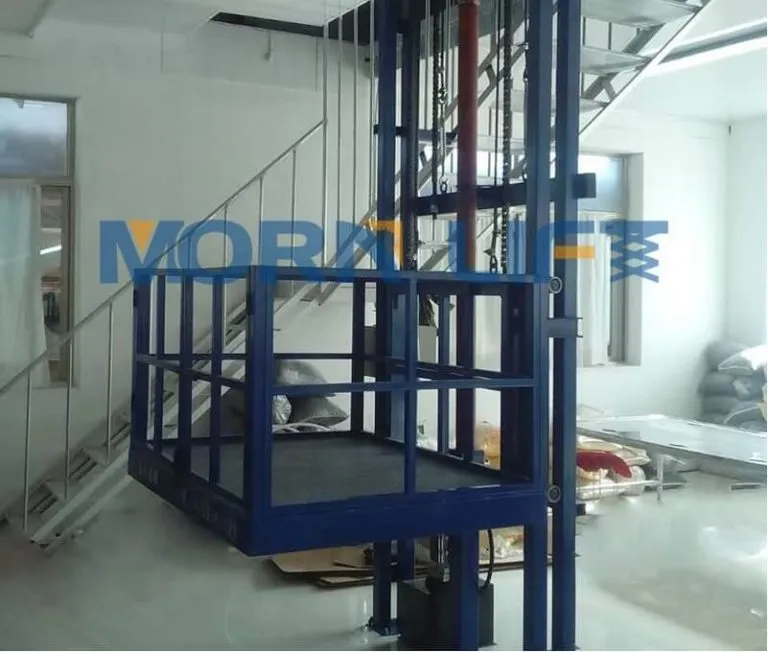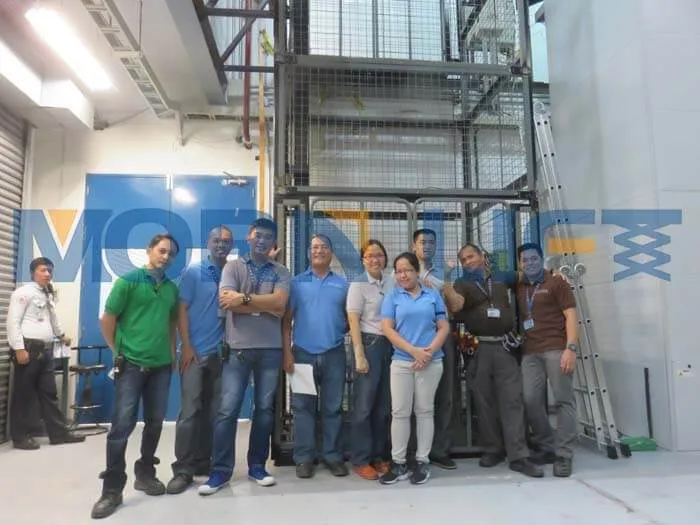Table of Contents
The Best Way of Hydraulic Goods Lift Trouble shooting
Failure adjustment of hydraulic goods lift
- The lifting speed of the hydraulic goods lift has slowed down, so adjust the overflow valve by yourself. After the relief valve was adjusted, the lifting speed did not increase, but the rail-type lift freight elevator failed to stop the operation.
- Improper use or aging, and the use of guide rail elevators for dirt has slowed down. After the speed slows down, first consider the factor of hydraulic oil flow. Factors affecting the flow of hydraulic oil include: hydraulic pipelines, hydraulic valves, hydraulic oil pumps, motor speed control devices, etc.3. The overflow valve is generally placed inside the pump station with an adjustment valve on one side. Its function is to prevent the hydraulic system pressure from being too high and to protect the hydraulic system settings. It is dangerous to simply set the overflow valve. If the pressure in the oil cylinder or the oil pipe is too high, serious failures of blasting may occur. The customer of the rail-type elevator freight elevator stopped the failure because of self-adjusting the overflow valve.

- The hydraulic system pressure should be checked only when the guide rail elevator cannot be started with load. If the pressure is lower than the normal range, the overflow valve setting value can be adjusted.
- The hydraulic oil has deteriorated or has impurities. After the hydraulic oil is used for a long time, there may be impurities or deterioration in the hydraulic oil. Take a sample for inspection to see if it contains solid particles, discoloration, or odor. Replace the hydraulic oil if necessary.
- The hydraulic pipeline may be blocked. The hydraulic pipeline is also a very important link. Check whether the hydraulic pipeline is unblocked. The editor reminds everyone to focus on checking whether each hydraulic valve, including one-way stop valve, electromagnetic reversing valve, proportional control valve, overflow valve, etc., is blocked or stuck. If there is a problem, clean or replace the hydraulic valve in time.
- Hydraulic pump is also an important factor affecting hydraulic oil flow. Hydraulic pumps that have been used for too long are also prone to problems. When the speed of the hydraulic lifting platform slows down, check whether the oil supply flow of the hydraulic pump is stable. If you find any problems, contact the manufacturer in time to avoid the warranty period.
- There may be leakage in the hydraulic system. Check the hydraulic system for leaks, focusing on the connections of hydraulic pipes and joints, cylinders, and hydraulic valves. If hydraulic oil leaks, replace the composite pad or wrap the raw material tape.
How to make sure your hydraulic goods lift under good condition
- After customizing the lift freight elevator according to customer needs, it needs to be loaded and transported to the customer site. Because the production base and the customer’s demand are at a certain distance, some are in the same city, some are too far apart, and the transportation methods are also different. , But no matter what, safe loading and unloading are very important. Forklift and crane loading and unloading must be smoothly transitioned. The loading site requires special personnel to command to prevent accidental collapse and cause personal injury. After loading is completed, check whether all is installed and whether there is Forgotten and missing accessories and other materials.

- During the transportation of the lift freight elevator, pay attention to the road conditions, check whether the rope is loose, whether the equipment is swaying, and avoid the loss and fall of equipment parts and accessories due to vehicle vibration.
- To arrive at the customer site, the customer’s on-site cooperation is required, such as forklifts, labor, etc., and the plant personnel should also guide when unloading the equipment to prevent accidents from slipping and causing equipment losses. It is best to proceed steadily and safety first.
- The equipment has landed safely, this is the customer needs to verify whether the tonnage, size, parameters, accessories, etc. of the lift freight elevator are complete, whether there is any omission, whether there is damage, etc., after the inspection is completed, sign for receipt. The next step is the on-site construction and installation of the equipment.
Generally, on-site construction and installation of elevator freight elevator manufacturers will be completed, customers do not need to worry. The above is the knowledge of freight elevator transportation and loading and unloading, I hope it will be useful to everyone.





